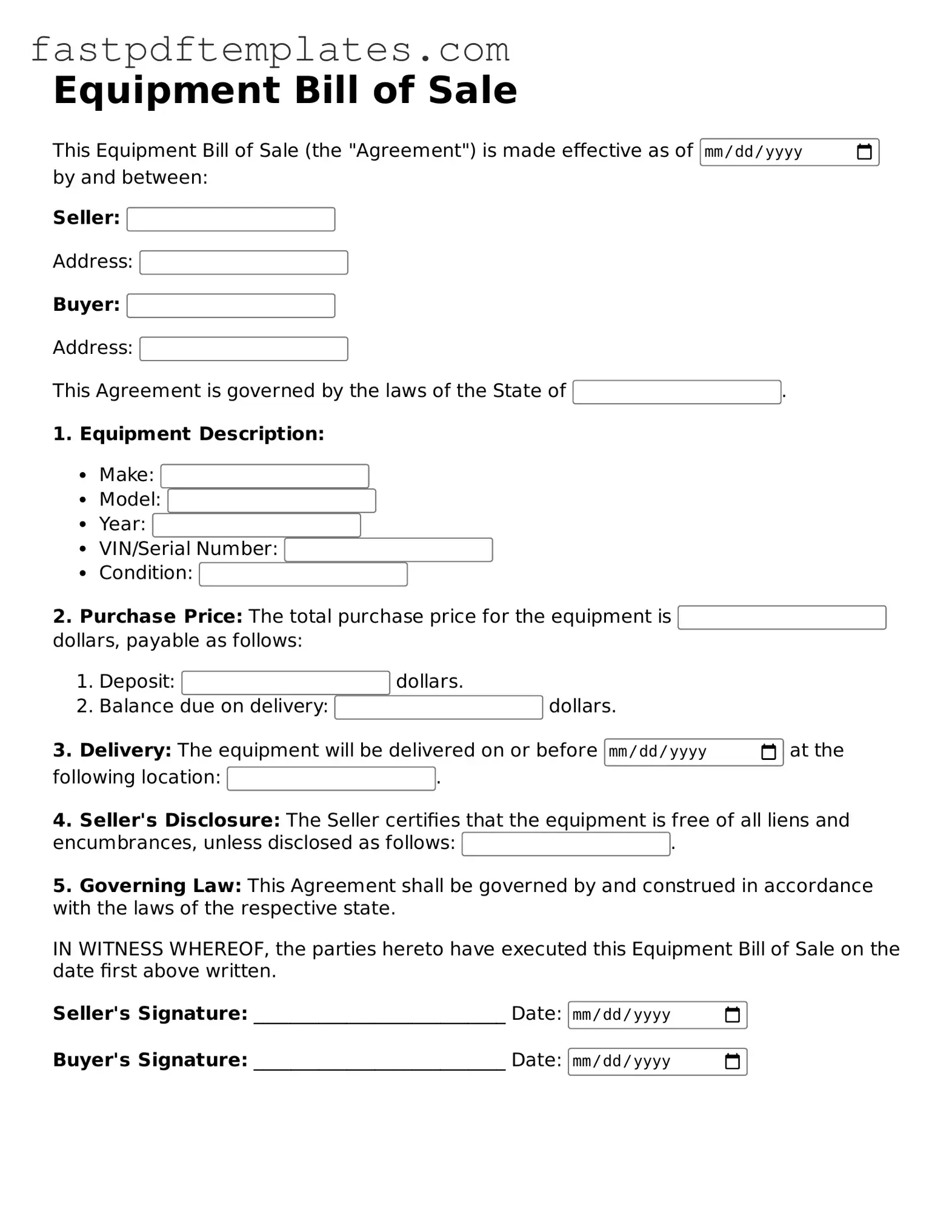Fillable Equipment Bill of Sale Document
The Equipment Bill of Sale is a legal document used to transfer ownership of equipment from one party to another. This form provides essential details about the equipment being sold, including its description, condition, and sale price. Utilizing this document can help protect both the buyer and the seller by ensuring a clear record of the transaction.
Access Document
